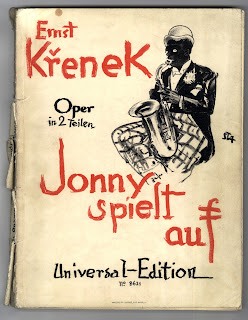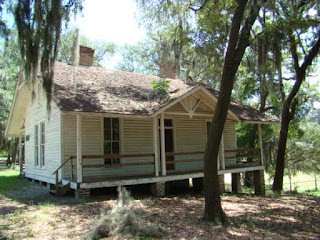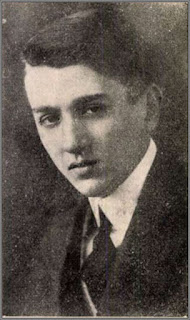Listening Recommendation: "Koanga" by Frederick Delius
Frederick Delius' opera "Koanga" (1895-97) - Can we today enjoy a music drama which is set in a plantation in the southern US during the times of slavery?
In the wake of the recent "Black Lives Matter" movement, as well as the Civil Rights Movement a few decades earlier, we ought to have become more sensitive towards such words as slave or negro, or such practises as whipping or beating. With this in mind, the libretto of "Koanga" (a co-production between Delius and Charles Francis Keary)1 can no longer be socially acceptable, although the plot itself is pretty typical 19th century operatic stuff, with - you guessed it - both protagonists dying at the end.
 |
| Frederick Delius (1862 - 1934) |
- George Gershwin's all-black opera "Porgy and Bess" (1935) has certainly not been without controversies, although it remains extremely popular until today, but this should be unmistakably attributed to the jazziness of its music and the fact that so many of the songs have become classic hits within the international jazz scene and beyond.
- A more unfortunate history befell Ernst Krenek's opera "Jonny spielt auf" (1926) about a black jazz musician, when a decade later it was placed onto the Nazi's infamous catalogue of "Entartete Kunst".

Title page of Krenek's "Jonny spielt auf" - Paul Abraham's 1931 operetta "Blume von Hawaii" stereotypes the 'dark-skinned American jazz singer' with the character of Jim Boy; although a typical love-story cum revolutionary-plot-gone-wrong with a happy ending (and full of catchy jazz-inspired tunes which combine the traditional Viennese operetta and the new American dance craze), it is the portrayal of the black jazz musicians that has become rather unacceptable in modern times.
- Although a minor silent role, the appearance of the small black boy ("Ein kleiner Neger") in Richard Strauss' "Der Rosenkavalier" (1911) is questionable, yet shows the fashion of the time of displaying something of 'exotic' origin as a trophy which was so popular during the colonial era.
- Guiseppe Verdi's "Otello" (1887) maybe excused due to it being based on Shakespeare's play, and both the opera and the play - the plot itself not containing overt racial elements, yet with the title role being a 'moor' it is triggering considerations about the character itself, and how he's being portrayed2 - continue to hold their places within the repertoire of theatres and opera houses across the globe.
- The 'moor' Monostratos in Wolfgang Amadeus Mozart's Singspiel "Die Zauberflöte" (1791) is maybe less a real person than just another fabled creature, like Papageno or the Queen of the Night, but he is the bad guy who is doing all the dirty work until being punished for it by Sarastro, the High Priest.
Maybe not necessarily only the racial undertones and stereotypes, which, no doubt, can be found in "Koanga", but rather the clumsiness of its storyline3 and other flaws in the libretto account for the very few stagings Delius' opera has seen so far4 - although, and this speaks for itself, there is a fabulous semi-amateur performance available on YouTube with The Lydians from Trinidad and Tobago made in 1995, and accompanied by a small orchestra comprising synthesisers and steel drums, but sporting lavish costumes and passionate singing and dancing5.
Delius' music, on the other hand, pays homage to and confirms his genuine interest in the traditional Afro-American music of his days: The young Fritz (as he was known to his friends and family) had spent some years in Florida during the 1880s where he grew oranges and listened to the black people in the surrounding fields and villages singing their songs and spirituals. He even took part in village life, and, anecdotally, treated his black servant so well that the poor man never wanted Delius to leave!
 |
| Delius' house in Jacksonville, Florida |
Unsurprisingly, these influences of black people's lives and culture present themselves in the score throughout the opera: In the orchestra we find the addition of banjos (possibly for the first time in classical music), a cow horn and an array of percussion instruments such as tam-tam and tambourine. The chorus accompanies at times the action like a musical back drop depicting the singing of the plantation workers: rhythmically syncopated, harmonically pentatonic, with an added major sixth. The instrumentation is already characteristic for Delius' ethereal, colourful later style, which culminates in the only surviving repertoire piece from this opera, the dance sequence "La Calinda" - which here, in the wedding scene of Act II, is so much prettier in its choral version than in the famous concert hall adaptation.
With regards to the two lead roles, Palmyra's lyricism is offset by the dramatic diction of Koanga, the African Prince, who, albeit enslaved, displays his unbroken free will, particularly when cursing the plantation owners and their folk following Palmyra's disappearance after their mock wedding, whilst evoking Voodoo powers in order to bring death and disease to the plantation. The most sombre, gripping music - and some of Delius' darkest scores - then opens Act III when Koanga and his men perform their rituals with the Voodoo priest, and seal the magic spell on their foes. In deepest E flat/A flat minor (later opening up into A minor, F major and through to G minor into E flat major) and with words which resemble native African languages, the scene, set in a "swamp at nightfall", unfolds, when suddenly the dance is reaching a frenetic climax, before "the fire dies down" and the ghostly episode comes to an end in a vision of a plantation void of any life and of Palmyra lamenting Koanga's absence.
Yet Palmyra reappears, the vision vanishes, and the dramatic events leading to the execution of Koanga for his killing of Perez, the overseer, and Palmyra's suicide take place.
"Koanga" has rarely been performed, despite continuous attempts to improve the libretto over the years. Following its 1904 premiere in Germany (in 1899 there had been a private performance in Paris), it was not staged in Britain until 1935 under Sir Thomas Beecham at Covent Garden. Sadler's Wells took on the work in 1972 in what was to become its only commercial recording under Sir Charles Groves. In the early 1970s it was also performed in the US, and more recently, at the Wexford Opera Festival in Ireland in 2015 - and of course, not to forget the aforementioned staging from Trinidad in 1995. There has also been a BBC radio performance in 1958 with the BBC Symphony Orchestra and Chorus conducted by Stanford Robinson.
A lot of great music can be found in "Koanga", from almost Wagnerian overtones to, as mentioned, the influence of Afro-American spirituals. Will we see many more performances in the near future? Possibly not, and the libretto and storyline, as discussed above, will not be encouraging a great deal of opera companies to come forward with a new production! However, we can still enjoy the music (rather than the words) by listening to the recordings thus available to us, either the EMI set (Groves) or those on YouTube.
_________________
1 Eric Fenby, in his 1971 biography of the composer, still calls it a "Negro opera".
2 The question is: Do we really need to use blackface if there are so many talented black singers and actors around in our days?
3 see the review of the 2015 performance in Wexford, Ireland in: The Gurdian.
4 Not least the success of his next opera "A Village Romeo and Juliet", premiered in 1907, eclipsed all his previous as well as later attempts at this genre and secured Delius a permanent spot as one of modern Britain's greatest opera composers.


This comment has been removed by the author.
ReplyDeleteFor further reading on this subject see: Voodoo and Slave Culture in Frederick Delius' Koanga by Jillian J. Johnson; Tuscaloosa, Alabama 2018.
ReplyDelete